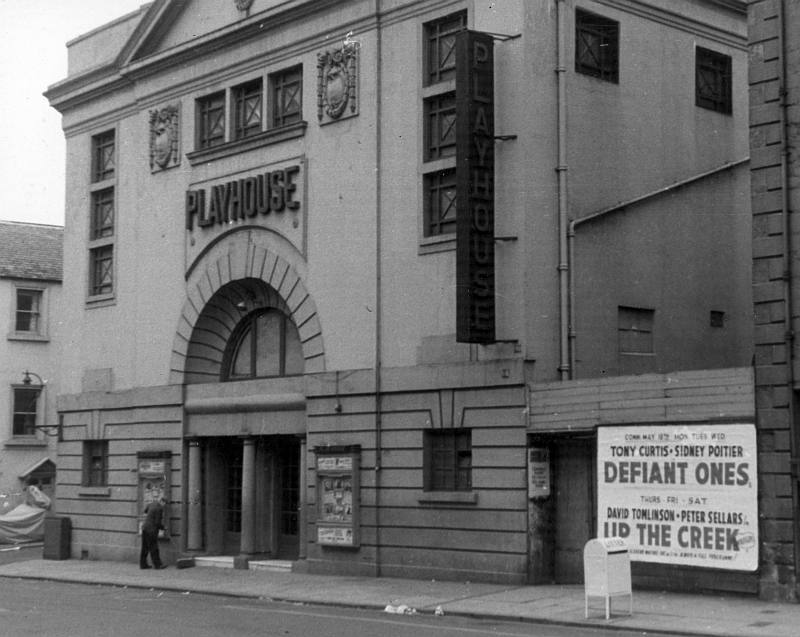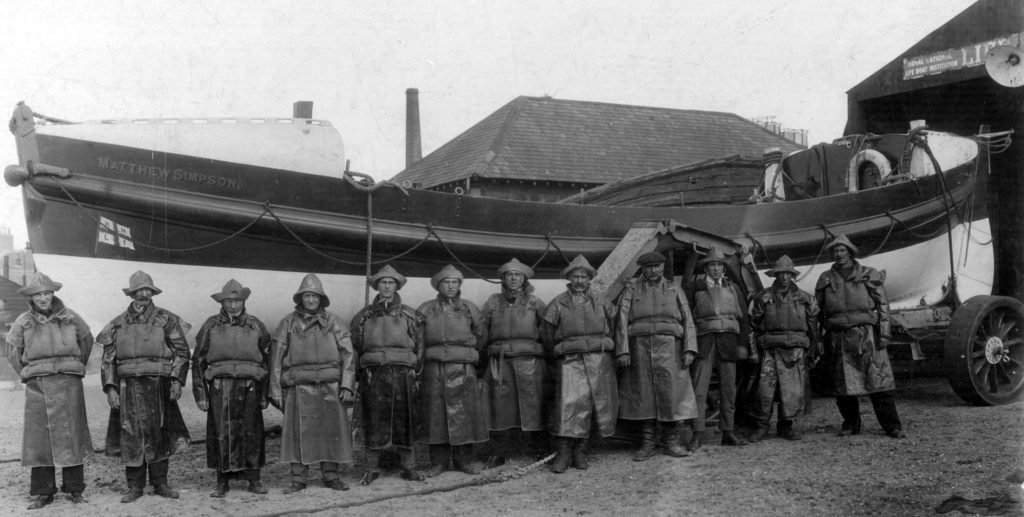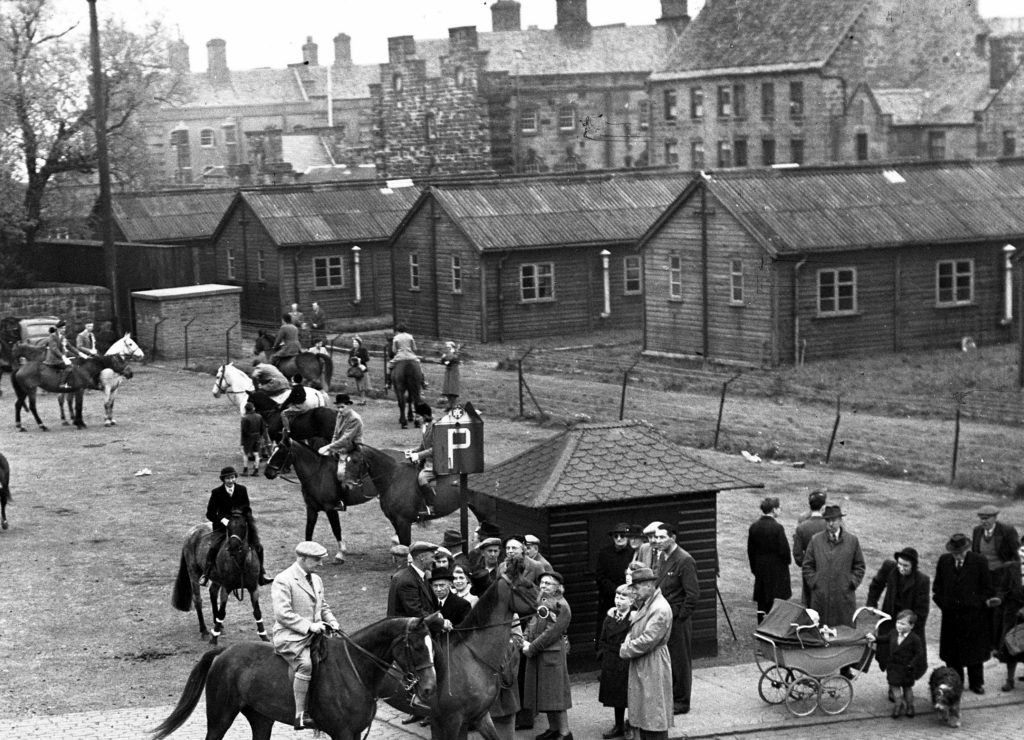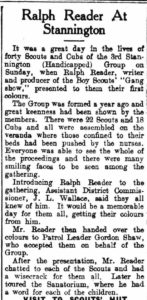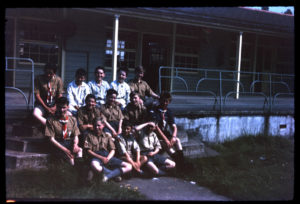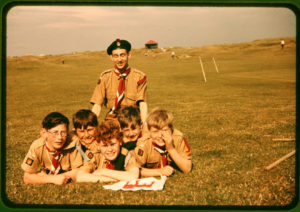ATTRACTIVE WINDOW DISPLAY
FOR CHRISTMASTIME AT BERWICK
To take the family for a walk round the shops of Berwick at this time of year means almost financial ruin, for after the tempting window displays of our leading shopping centres even the close-fisted ad narrow-minded trait of character which we all possess more or less is apt to be swept away in the Christmassy sprit engendered.
In all the leading shop windows special electric lighting installations show off the goods displayed to great effect, and in this work Mr Williams, electrician, High Street, who himself has a fine display of electric appliances, cam claim a large amount of credit.
Messrs Ralph Dodds and Son makes a special feature of crackers and all that goes to make the Christmas party a success. Mr Fish, bootmaker, with a fine imitation snow fall, brightens this part of the High Street, the large window being filled with high-class footwear. Ford’s Garage Coy. And Tom Lilburn give a lead in mechanical and Meccano toys; while Mr Howe has again his attractive display of all that gladdens the youthful heart. Messrs Stoddard, by the way, have a display of something calculate to gladden the hearts of those of more mature years. Mr Cairns’s baker and confectioner, shop is most tastefully done off in Jap style, and the confectionary and pastry most tastefully arranged.
In the drapery and fancy good lines, Messrs Paxton and Purves and Dunlop’s have a fine window dressing, as also have Messrs Redpath and Sons. Other shops nicely done off are Mr Oliphant’s Mr R K Gaul’s; Mr R Robertson, Hide Hill; Mr Miller, Hide Hill; Mr Joures, Miss Gray, and Mr Martin. In the bakery and fruiterer line, the outstanding window dressings may be seen at Mr Simmen’s, Mr Dudgeon’s, Mr Mason’s and Mrs Thompson’s; Mr F. Rea, Hide Hill; Mr J. McDonald’s Mr J. Waite and Mr Outterson.
While we have given the leading displays we know the list is by no means complete. Every shop, in fact, is doing its best this Christmas season to attract, and if we may judge by the interest shown by the public, they have succeeded in attracting. All round, the Christmas windows this year are the best since 1913.
SCOUT CONCERT
1ST BERWICKS
“It’s going to be heaps better this year said a Boy Scout selling tickets –“its” being the annual concert of the 1st Berwick Troop. And those who bought the tickets and went last Thursday evening to swell the crowd at the Parochial hall now agree that the Scout was right – “It” was heaps better. There was a variety about the programme that never palled. Everything was gone into with that refreshing enthusiasm that seems to pervade the whole Scout movement in Berwick at the present time from the County Commissioner downwards. “It” was the “show” of the 1st Berwicks, and in all the arrangements, that went without a hitch, could be traced the ability of Scoutmaster Parkes. He was well backed up by Scoutmaster L.F. Gleig, A.S.M, J. Steven, Scoutmaster O. Peacock, and C.W. Davies, and the various patrol leaders and members of the Troop, amongst whom are boys with plenty of promise.
The opening sketch – “A Christmas Exam.,” was exactly the sort of piece to interest the boys taking part. The scene was a schoolroom, where the three Professors are putting the boys through an “exam.” Father Christmas enters and, with his characteristic good humour, changes the scene to one of mirth and amusement, the professors and pupils finishing up with a “jing-a-ring” round the table, singing a parody of “John Peel.” The burlesque, “A Theatrical Agency,” was most amusing. To test the theatrical qualifications of the various applicants, the “Agent” asks each in turn to sing a little ditty entitled “London’s burning.” He shows them how to do it. Tragedy, drama comedy ( with a stutter) and the “Knut Bertie” all have a try at the song, and then the unsatisfied Agent again starts to show them how he wants it done. This time his dramatic cries of “Fire!” are doused by a liberal application of a soda-water syphon and numerous tumblers of water poured over him by the would-be actors.
The tableaux of Scout life in camp were most interesting. The descriptive story was given by Scoutmaster Parkes, and the change of tableau was done very noiselessly and quickly. The lighting effects by Mr Williams were a great help to the stage setting for the tableaux. To the strains of the bugle sounding “Reveille” the audience saw their first picture of Scout life – a newly-awakened Scout stretching himself. The cooks busy preparing food and washing dishes was the second picture: while No.3 showed the healthy discipline of camp life, representing “The boy who wouldn’t wash, “stripped to the waist and being forced to submit to the ordeal of having buckets of cold water poured over him. In the next picture all branches of the Scout movement were shown- Rovers, Sea Scouts, Land Scouts, Girl Guides and Wolf Cubs – “Brownies” being aloe unrepresented. Then the closing scene showed the Scouts o “night watch” by the glowing fire-light.
The “Camp Fire Sing-Song” was the concluding item of the programme, and was in itself a series of items. In the centre of the platform was a most realistic log fire, and seated round are the troop of Scouts. Their war-cry attracts two neighbouring farmers, who join the group and the sing-song, contributing “Widdecombe Fair” as a duet. A solo by Second N. Campbell and troop songs that wet with a splendid swing were also sung, and Scoutmaster Gleig, with his fine deep bass, gave a good rendering of “Wrap we up in my Tarpauline Jacket” as well as a monologue.
For the benefit of those who wonder what the Troop war-cry is we give it as under. It is the Danish war-cry adapted and was originally American :-
“Yehikkalika Yehikkalika
Tehow Tehow Tehow
Boomerlaka Boomerlaka
Bow Bow Bow.
Chikerlika Boomerlaka Bish Boom Ba.
The Bears are out. Ra Ra Ra.”
Other good items on the programme were a humorous recitation by Bain Dickinson, with bonnet, veil, mantle and skirt complete, and the violin solo by George Martin. The dancing display by Pipe-major Mackie’s party of four dainty girls was another popular item, and the sections of Spittal Amateur Orchestra under the leadership of Mr T. Jackson were enjoyed by all.







